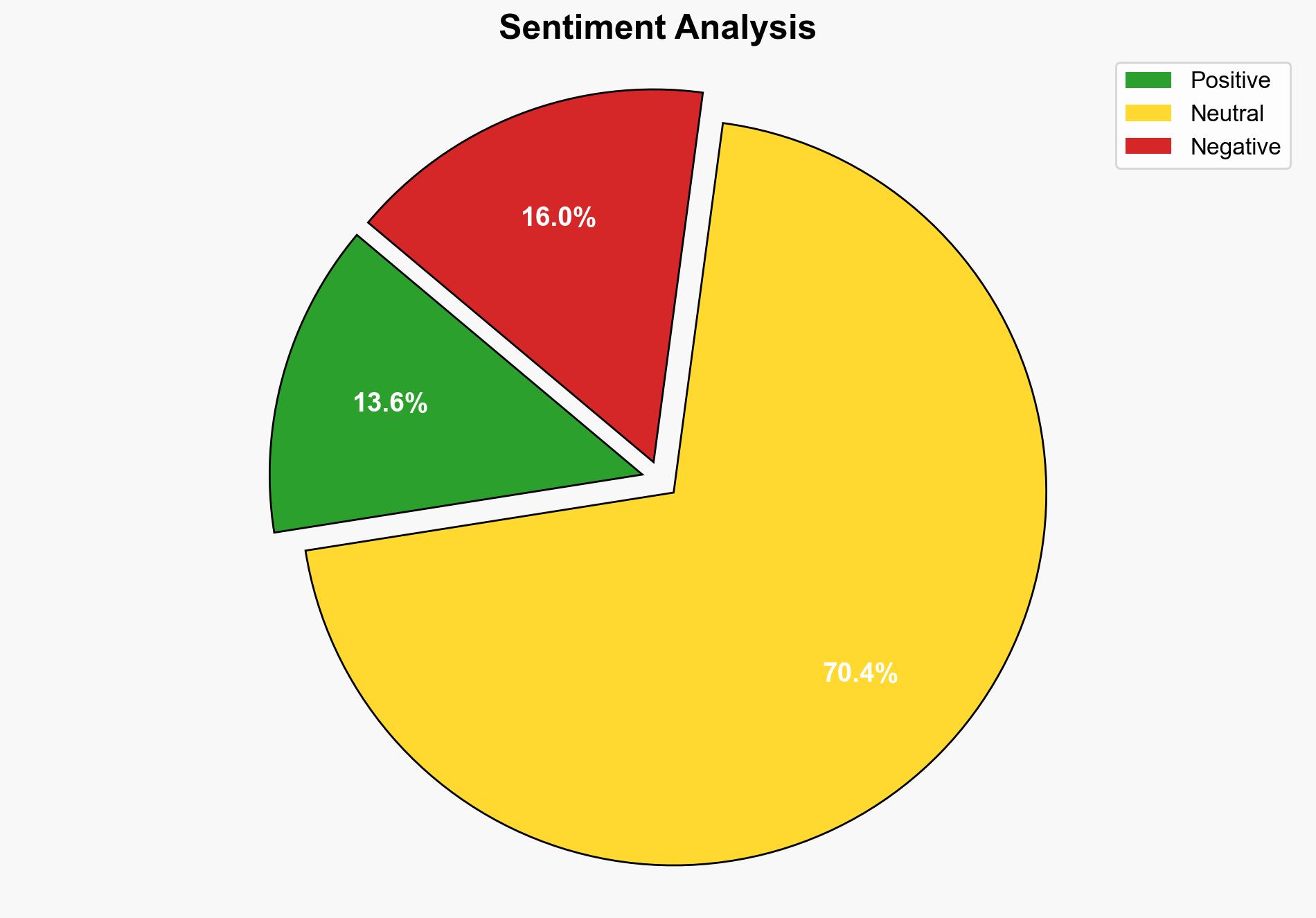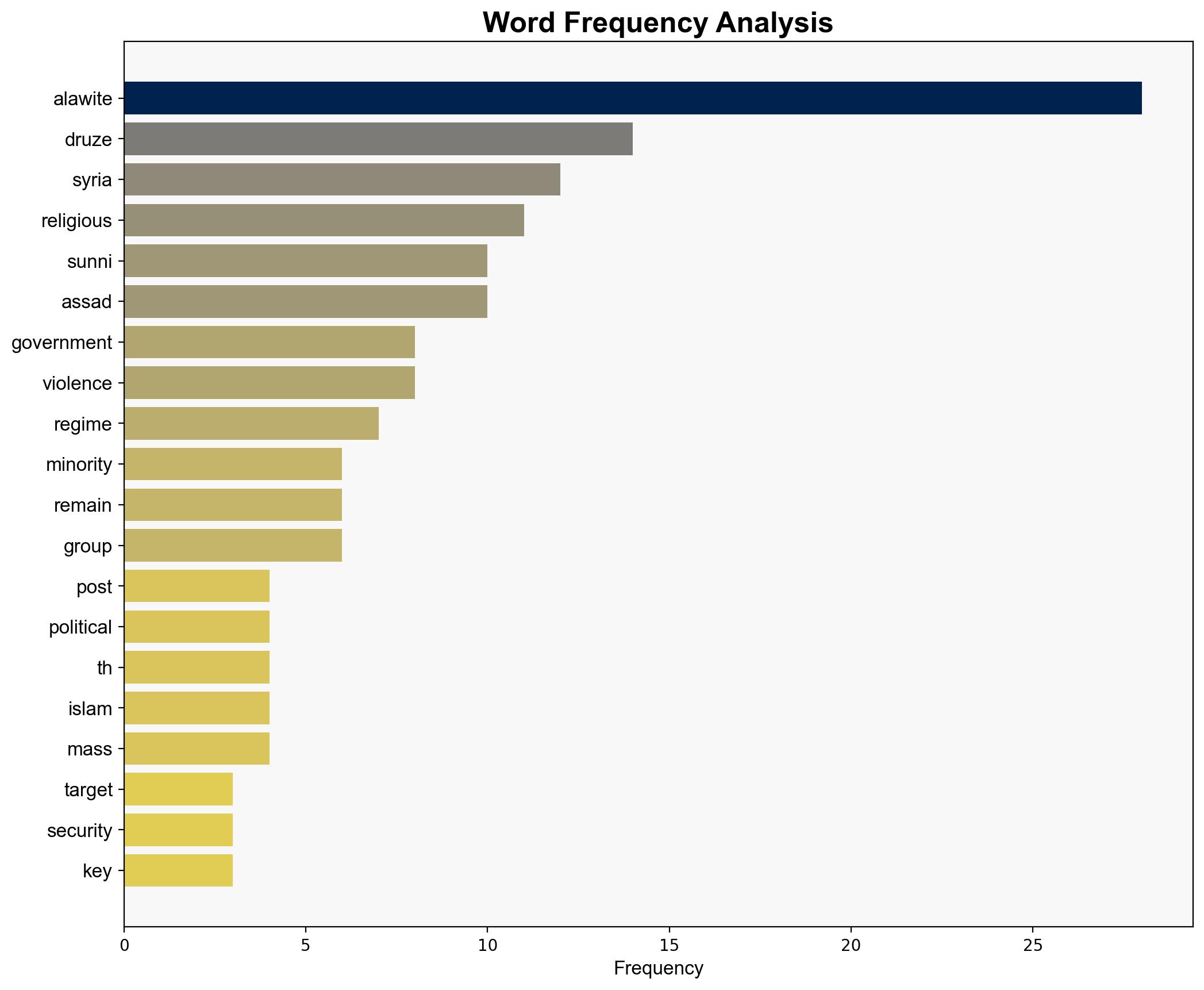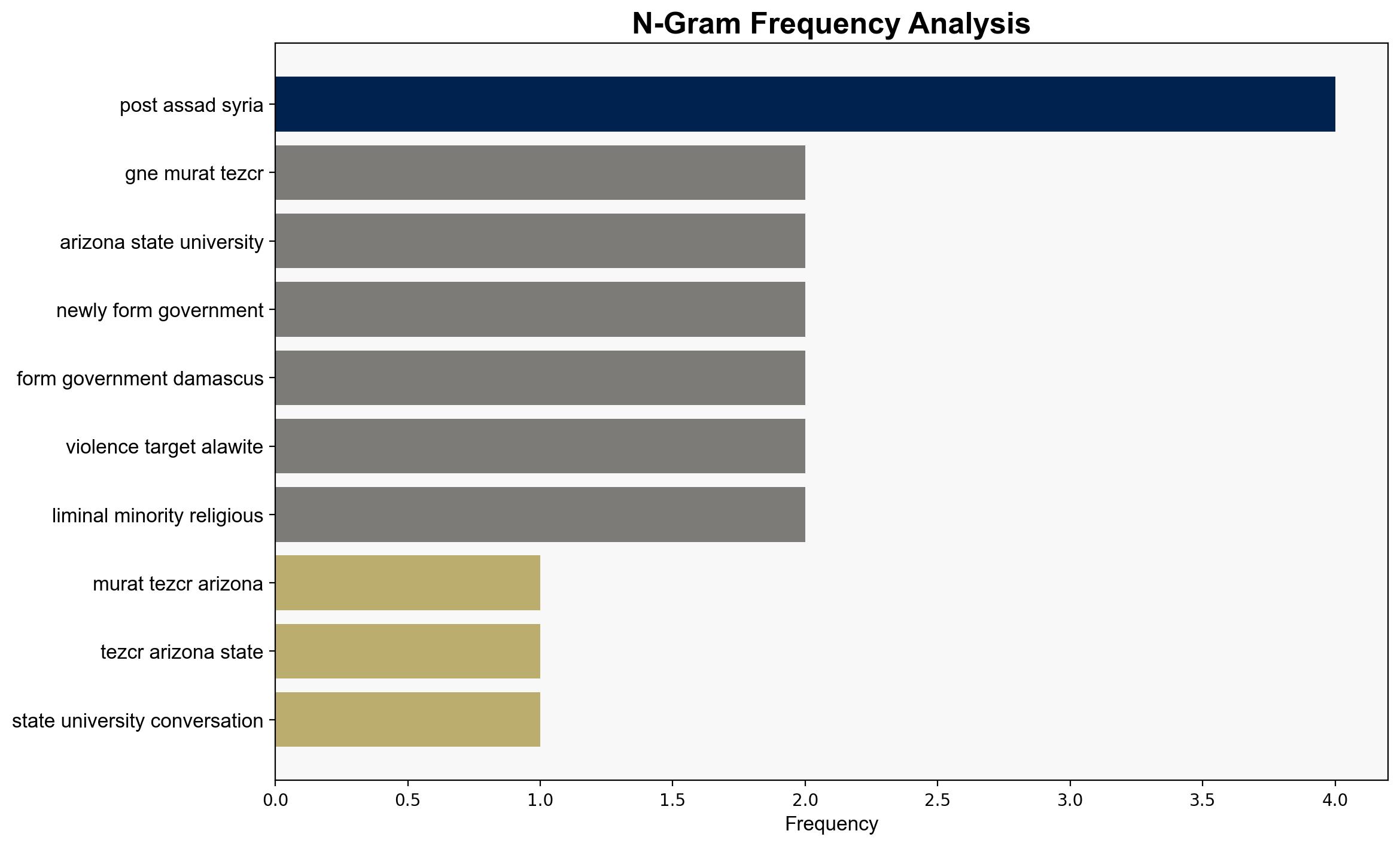Understanding the Violence against Alawites and Druze in Syria after Assad – Juancole.com
Published on: 2025-07-24
Intelligence Report: Understanding the Violence against Alawites and Druze in Syria after Assad – Juancole.com
1. BLUF (Bottom Line Up Front)
The report highlights the escalating violence against the Alawite and Druze communities in Syria following the decline of the Assad regime. Key findings indicate that sectarian tensions, historical grievances, and external influences are exacerbating the situation. Recommendations focus on diplomatic engagement, support for minority rights, and regional stability initiatives.
2. Detailed Analysis
The following structured analytic techniques have been applied to ensure methodological consistency:
Causal Layered Analysis (CLA)
Surface events include recent clashes in Sweida province and targeted attacks on Alawite communities. Systemic structures involve the power dynamics post-Assad, with shifts in military and political alliances. Worldviews reflect deep-seated sectarian divides, while myths perpetuate historical narratives of persecution and marginalization.
Cross-Impact Simulation
The violence in Syria could destabilize neighboring countries, potentially leading to increased refugee flows and regional tensions. Israeli airstrikes in support of the Druze highlight the complex interplay of regional powers.
Scenario Generation
Scenarios range from continued sectarian violence and international isolation to potential reconciliation and integration of minority groups into a post-Assad political framework.
3. Implications and Strategic Risks
The ongoing violence poses significant risks to regional stability, with potential spillover effects into neighboring countries. The marginalization of minority groups could lead to radicalization and further conflict. Additionally, the involvement of external actors like Israel complicates the geopolitical landscape.
4. Recommendations and Outlook
- Enhance diplomatic efforts to mediate between conflicting parties and promote minority rights.
- Support initiatives aimed at economic development and social integration for marginalized communities.
- Best case: Successful reconciliation and stabilization efforts lead to reduced violence and improved regional relations.
- Worst case: Escalation of sectarian violence and increased foreign intervention exacerbate regional instability.
- Most likely: Continued low-intensity conflict with periodic escalations and international diplomatic efforts to contain the situation.
5. Key Individuals and Entities
Bashar Assad, Hafez Assad, Ali (son-in-law of Prophet Muhammad)
6. Thematic Tags
national security threats, sectarian violence, regional stability, minority rights





